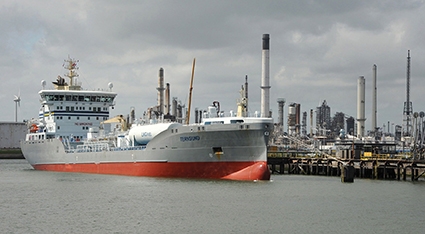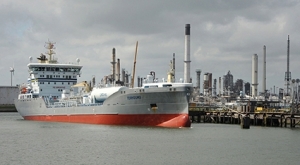LUKoil & LNG
Russia's largest private oil company, LUKoil, has been carefully distancing itself from exporting LNG since 2014, but all for nothing. The main argument of the officials: this will lead to competition with the products of Gazprom and, accordingly, a decrease in the export earnings of the treasury.
Yet, Azerbaijani and Russian businessman, president of the leading Russian oil company LUKoil, Vagit Alekperov, will still have the opportunity to become a small exporter of gas, though that gas is liquefied and not from Russia.
In the spring of 2015, when the "African campaign" of Lukoil started on such a scale, the oil company was already entering the promising Etinde project in Cameroon. According to local media, the purchase was not cheap: the Russians had to pay about $200 million for their 30% of the project. The rest was divided between British NewAge (30%) and Bowleven (30%), and the local state corporation SNH (10%).
According to bankers from Barclay's, the acquisition was well worth the money: a 461 square km. gas field with reserves of approximately 290 million barrels of oil equivalent. LUKoil was not completely clear what to do with these stocks. While SNH insisted on the sale of produced gas to Equatorial Guinea, the partners diligently sought more lucrative options.
LUKoil, together with the British, managed to convince their hardened partner to stop on the most promising and fashionable option - liquefied gas, or LNG. At last February shareholders' meeting of the project, the British Bowleven "discussed several potential options, including FLNG (floating LNG, or a floating LNG plant), the company said.
“We also received consent from the local government for the export of LNG," Thomas Becker, representative of the British company, added.
When a floating LNG plant was put into operation, neither the British nor LUKoil informed the media. According to the latest data, the shareholders plan to start production from Etinde in the second half of this year. And, of course, without Gazprom.
For LUKoil, this will actually be the first such project in the entire history of the oil company. The company has asked the government for at least a few years to export LNG. The last time LUKoil tried to break through the monopoly of Gazprom was in autumn 2014, when it sent its proposals to the Russian Gas Society, which were quickly labelled "untimely".
Building LNG plants abroad is much easier than building the relationship with the authorities, Lukoil joked.
The technologies for building a gas liquefaction plant are available and do not represent any technological or technical uniqueness. “There are already so many factories built that they are simply replicated,” Alekperov said in autumn 2015.
Yet the solid status of the LNG exporter hardly brings a comparable weight for the company from an economic point of view. According to Bowleven, a daily floating LNG plant will be able to receive up to 4.6 million cubic meters of gas from Etinde. This is equivalent to approximately 1.2 million tons of LNG per year.
By all standards, the project is very modest. “Yamal LNG company Novatek, for example, will ship 16.5 million tons- which, for the now fashionable floating LNG plants, is quite a standard capacity,” notes Barclays analyst, Michael Cohen. Thus, the private bunkering project LNG-Gorskaya (Leningrad region) to be launched by the end of 2017, will also operate on the basis of a floating LNG plant with a capacity of 1.26 million tons per year.
“The world record holder (the Australian ship-plant Prelude FLNG, with a capacity of 3.6 million tons of LNG, also considered to be the largest ship in the world) for them is as far away as can be,” says Cohen.
But even for such modest volumes, one way or another you still need a buyer. According to the representative of Bowleven, the shareholders of the project have not yet started negotiations with potential buyers. Meanwhile, the first in this queue may turn out to be Russian Gazprom, or rather its trading LNG division Gazprom Marketing and Trading, which has already concluded a contract for the purchase of just 1.2 million tons of LNG over eight years from neighboring Coastal LNG project Kribi LNG, to start this year.
“In terms of reserves and geographical location, Cameroon, where LUKoil operates, is a very promising country for LNG production,” says Stanislav Mitrokhovich, an expert of the National Energy Security Fund.
"But it must be understood that the most favorable times for LNG are coming: there’s a lot of it and the cost of gas is now extremely low," expert Laifu adds. “About 60 percent of the announced projects do not fit into the market, in fact it is competition either within the country or within the region”.
"If the project is launched, its surviving or not will depend first of all on the success of competition with the American LNG," Mitrokhovich believes.
And they will have to compete for the markets of the countries of South and Latin America: last year the largest volume of American LNG went there, while only 10 percent of the total production fell into Europe. It should be noted that all the gas shipped by the States last year was contracted in 2011-2012, when the cost of LNG was significantly higher.
“Competing with Americans in the price will be difficult,” Cohen says. "But since the LUKoil project and its partners are floating, it gives them some insurance: if it is unprofitable to supply LNG, then such a plant can always be sold to someone else," he said.
Dimitri Dolaberidze











